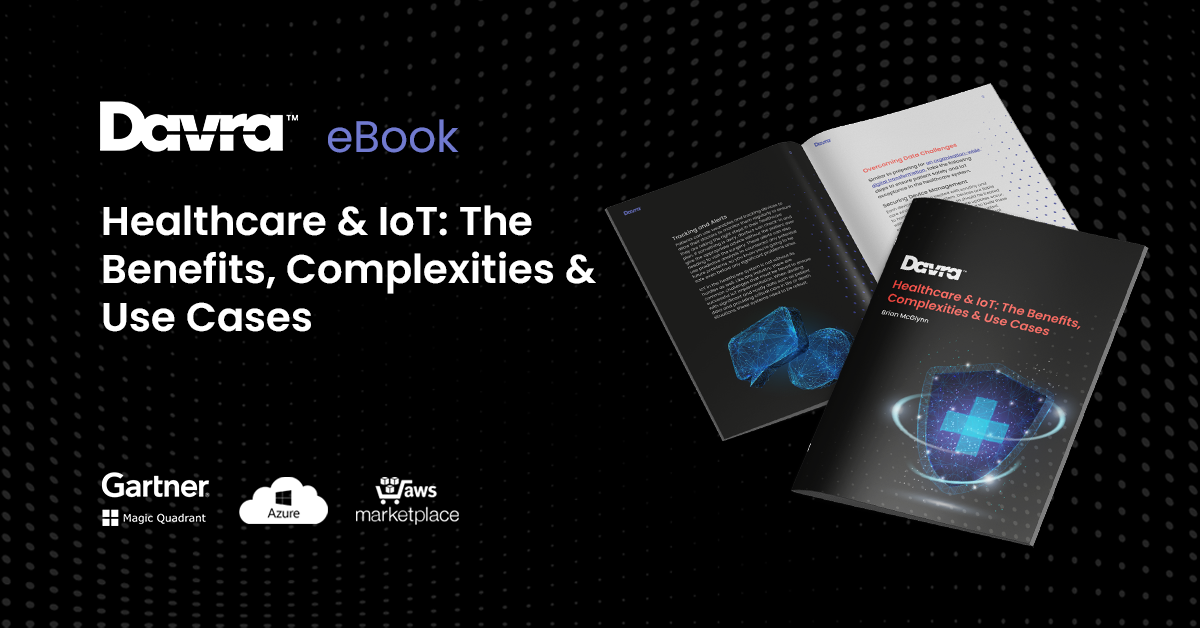IoT in Healthcare Use Cases eBook
Download Your Free IoT in Healthcare Use Cases eBook
Read More


When mapping out your IoT plan, there are a number of factors to consider. What decisions will be driven by this data? Are there any current processes that need improving before we implement IoT? What factors do we need to track within the environment? This last question is a vital one to answer because it helps to define what equipment will be monitored, and what kinds of sensors can be applied.
There are a wide variety of sensors available that can detect and react to changes in the area or environment. Temperature, motion and pressure are all factors that sensors can track. Depending on their set up, they can push the data they receive through the network and into a system, which can be used to make important decisions and analyse the environment.
In IoT systems, these sensors use wireless connectivity to export their data to the system. Sensors typically use very little power and only need to be charged every few years, meaning they are cost-effective and low maintenance.
In a previous article, we spoke about how to deploy devices in your IoT environment. Sensors can come in all manner of sizes, depending on your use case needs. In an IoT rollout, there may be thousands of sensors that need to be deployed to various areas and equipment, which could be difficult to keep track of. Developing an app that allows you to track and simultaneously configure these devices safely will ensure you’re well on your way to a successful IoT project.
Every organisation has different needs and environments, so it may be tricky to figure out the right IoT sensors for your project. But going back to what key decisions you want to drive, and figuring out the most important processes you need to track will help you to decide what environmental factors you can record.
Pressure is the physical force exerted on or against an object by something in contact with it. As you can imagine, there are multiple benefits of pressure sensors used in Industrial IoT cases because these types of sensors can measure water levels, the weather such as atmospheric pressure and gas pressure in oil & energy settings.
These IoT sensors can be used to save lives in possible gas-explosive environs, or to trigger warnings if there’s about to be a flood.
These sensors convert rays of light into electronic signals by measuring the quantity of light and then turning it into a form that can be read by an instrument, in our case the IoT system. Light sensors have a multitude of IoT applications, from office management to agriculture.
Light sensors are used in offices to control brightness levels, which is similar to how your mobile phone brightness works in response to the sun and external light levels. Light sensors are also used in agricultural settings to assess how much light the soil is absorbing, which enables plants to grow.
A gyroscope measures the angular motion of an object, which helps determine the objects orientation. The accelerometer on the other hand, measures non-gravititional acceleration. When the object moves, it responds to the vibrations associated with that movement.
These two sensors are usually combined into one, and are widely used in IoT and in bringing driverless cars to fruition. Gyroscopic sensors are used to discover the direction of an object that is being tracked using GPS. They are also used to determine whether your mobile for example, is in landscape or vertical mode.
Acceleration sensors are widely used in IIoT to determine the vibrations of various machinery and ensure they are operating as normal.
Flow sensor devices measure the quantity or flow rate of a moving gas or liquid. It measures the cooling effect of the gas as it passes over a thin, heated wire. The device would have to be pre-programmed to know the gas density. Gas sensors on the other hand, detect and identify various gases in the environment.
Applications for these sensors include HVAC process monitoring, and in industrial settings where there may be gas leaks or certain gas levels need to be controlled. Smart metering comes into play here, where the sensors measure gas in a remote location. Magmeters and ultrasonic flow metres and IoT modules work together to control the gas levels in these locations, ensuring worker safety and efficiency.
These sensors measure the amount of heat energy created in the environment and can come in many different devices; infrared and contact sensors. Infrared sensors work by remotely detecting the energy emitted by an object, such as a machine, and then sends a wave to an electronic circuit to find the temperature measurement.
There is a wide variety of applications that temperature sensors are needed in, from HVAC to warehouse and inventory management, fleet and shipping containers to industrial machine tracking.
When searching for the right IoT project plan, it’s imperative that you match up your needs with the correct tracking system. Otherwise, you’ll end up gathering the wrong data and not correctly meeting your business needs and outcomes.
Everyday there are new sensors being developed and even more sophisticated ways of monitoring conditions, even with decades-old legacy machinery and other assets. Platforms like Davra are paving the way for new forms of data aggregation and tracking, and it’s becoming even more streamlined with the advent of 5G and faster connectivity.
If you would like to know more about the future of sensors, please contact us today for a chat.
Brian McGlynn, Davra, COO
Download Your Free IoT in Healthcare Use Cases eBook

Davra IoT is the only Industrial IoT Platform Available on AWS Marketplace
Read MoreThe Collaboration of Humans & Robots Has Created The Cobot
Read More